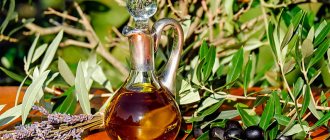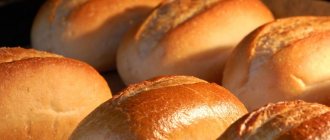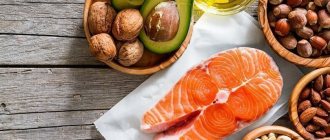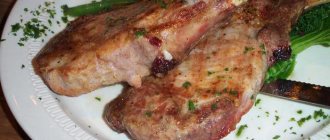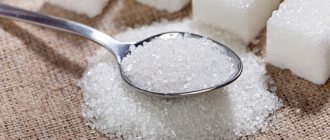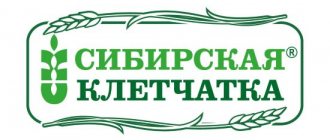Is it necessary to calculate nutritional and energy values?
The amount of kcal in a product is important information for consumers, which is why each manufacturer is obliged to accurately calculate all the calorie content of the product and indicate the information obtained on the packaging of the finished product.
According to the requirements of TR CU No. 022/2011 “Food products regarding their labeling,” information about calorie content must be indicated on the consumer packaging of any food product, which means that calculating the calorie content of dishes is a mandatory procedure for all food manufacturers.
Who should carry out the calculation of nutritional and energy values?
The calculation of the calorie content of dishes should be carried out by a specialist who has all the necessary knowledge in the field of drawing up regulatory and technological documentation for food production. To calculate the nutritional and energy value, you must know exactly the energy coefficients of all types of substances and determine exactly what calorie content the dish will have, depending on the method of its preparation.
The single portal “One Window” specializes in the development and execution of all types of regulatory, technical and operational documentation for the production of products. The specialists of our portal will help you quickly obtain all the necessary documents, calculate the energy value and calorie content of products in order to comply with all legal regulations in the process of carrying out activities.
What is needed to calculate the calorie content of foods?
To establish the nutritional and energy value, first of all, you should decide which indicator you need to obtain. Food manufacturers and managers of catering establishments often confuse them, passing them off as one another.
Nutritional value is a criterion characterizing the balance of a product. To determine it, information about the composition of the product is compared with the available standard nutritional values. The result is expressed as a percentage of a given norm. Energy value is the amount of energy that the human body receives when consuming certain products. Expressed in calories, kilocalories, joules.
Calculation of the energy value of products and food is carried out using the BZHU protocol, which indicates the amount of proteins, fats and carbohydrates in the product. The indicator is determined in one of the possible ways:
- Calculated. When applying this method, every ingredient that is included in the product is taken into account. Next, depending on the percentage, the required indicator for the hotel component is determined.
- Laboratory. The Kjeldahl method is used. Liquid chromatography or spectrophotometric techniques are also used. Each of the indicated options must be carried out in compliance with state standards.
When organizing laboratory tests, the following standards can be used:
- GOST 25001-2017;
- GOST 33409-2015.
Note! Calculating the nutritional value of food products is a mandatory step required to indicate information on the label of a product, on the menu or other sources. Displaying false data is prohibited by law. If such violations are discovered, the entrepreneur is held accountable under Article 14.8 of the Code of Administrative Offenses of the Russian Federation. When asking for help in determining the required indicators, an entrepreneur must provide a number of documents and information. Among them:
- registration certificates of an individual entrepreneur or company (copies of TIN, OGRN);
- a list of food products, dishes and other goods for which research needs to be conducted;
- information about the composition, raw materials used, technological process;
- information about the regulatory documents according to which the release of goods is organized.
The exact list of what is required for the procedure is determined individually during a preliminary consultation.
KBZHU: how to learn to count calories and balance nutrients
How much energy do you get during the day? To answer this question correctly, you need to calculate the calorie content of all the dishes you have eaten. This same skill will help answer the question of why you cannot lose weight, even with intense exercise. After all, if you eat more than you spend, then the weight will not go away.
Learning to count calories is not difficult. Especially now, when there are so many useful applications and special programs around. In addition, many foods have approximately the same calorie content. And the calculation is always made with a small error of 50-100 kcal. All that remains is to find out the special formula - and it is waiting for you in our material.
Counting calories
Counting calories helps determine the energy value of food. In order to do this correctly, you need to weigh the product and determine its calorie content per 100 g. To do this, you will need kitchen scales and calorie tables, which are easy to find online or on product packaging.
What if the dish consists of several ingredients? In this case, it is much more convenient to resort to a balance of proteins, fats and carbohydrates. Let's take an example: meat and a side dish of pasta. First, let's weigh: 100 g of meat and 280 g of pasta. This is 25 g of protein and 200 g of carbohydrates. The calorie content of each gram is 4 kcal. This means the total result is 500 kcal.
But 1 g of fat contains 9 kcal. This means that just one spoon of vegetable oil adds 100 to 200 calories to a dish. Be sure to take this into account when drawing up your diet and calculating the KBZHU. Mayonnaise and other sauces are also quite high in calories. And unlike vegetable oil, they are of little use.
Calorie counting formula:
- calories = (proteins)*4 + (carbohydrates)*4 + (fat)*9
- 1 kcal = 1000 calories
Why is KBJU needed?
A can of soda contains about the same amount of calories that you can burn if you run two kilometers. If you know about this in advance, it will be much easier to refuse the drink and quench your thirst with drinking water.
In addition to the calories themselves, fast carbohydrates (in other words, sugar) are also dangerous. They disrupt metabolism and cause surges in blood glucose levels, which ultimately leads to extra pounds. While slow carbohydrates (vegetables and whole grains), on the contrary, contribute to weight loss. They are rich in fiber, which prolongs the feeling of fullness.
There is also a difference in what fats we consume. Trans fats impair metabolism and settle in the abdominal cavity. And Omega-3 polyunsaturated fatty acids, for example, reduce inflammatory processes.
How much should you eat to lose weight
In order to lose weight, it is enough to eat 15-20% less. If we take into account that women on average consume 2000, and men - 2500 kcal, it turns out that 450-500 kcal are superfluous. Of course, a more accurate calculation is provided by additional factors: the person’s age, his level of activity during the day and sports activities. It is also recommended to apply the principle of fractional meals: eat 4-5 times a day, but in small portions.
Losing weight correctly
The most high-calorie foods are sweets and starchy foods. These are the ones that should be abandoned in the first place. Besides, the increased calorie content is not so bad. The fact is that sweets sharply increase blood glucose levels. This is fraught with a sharp decrease in it, which is accompanied by acute attacks of hunger. In addition, surges in blood sugar contribute to the accumulation of fat.
Learning to count calories
You don't have to calculate your diet exactly down to every calorie. But it’s still worth understanding the difference between 50 and 500 kcal. A serving of porridge is 300-400 kcal. Add to it a vegetable salad (200 kcal) and a piece of meat (150 kcal). It turns out 700 kcal and satiation for a long time, because these are slow carbohydrates and proteins. Or a fast food hamburger - 600 kcal. Belly fat and the desire to snack, which returns after an hour. After all, such food contains a lot of trans fats and fast carbohydrates. Calculating KBJU helps us make the right choice towards healthier products.
When calculating caloric content, it is worth considering not only the set of products, but also the method of preparing them. Fried potatoes contain much more calories than boiled ones. And soup with meat broth is more than the same soup with vegetable broth. Therefore, we pay attention to the balance of proteins, fats and carbohydrates. This is what plays a decisive role in metabolism. Total calorie intake should be the starting point, not the final point, of diet planning.
Calorie absorption problem
Even if you made all the calculations correctly, be prepared for the fact that expectations and reality will differ. The fact is that proteins and carbohydrates are not always completely absorbed. Fiber, for example, is not absorbed by the body, but is included in the number of carbohydrates. Ideally, it does not need to be taken into account when calculating total calories. Plant protein, unlike animal protein, is only half digestible. And this is also worth remembering.
Calculating your calorie intake is only the first step to weight loss. To lose weight seriously and for a long time, you need to learn to eat more consciously. Understand what benefits cookies will bring to your body and what benefits a fresh apple will bring to your body. Choose the most correct cooking methods, because the longer the product is subjected to heat treatment, the less vitamins remain in it. And vitamins are necessary for the proper functioning of our body. And weight loss, too.
Answers to popular questions
How much does it cost and what does the cost of calculating the nutritional value of a product depend on?
The exact cost of services for calculating the nutritional value of a product can be obtained from the portal specialists. Factors influencing the final price are:
- the number of products for which calculations will be carried out;
- composition of products and list of ingredients included in them;
- the applicant has accurate information about the quantitative content of proteins, fats and carbohydrates in the product;
- The type of determination of the required values used is calculated or laboratory.
- the need to prepare additional documents for the applicant.
How to calculate the calorie content of a dish with one or more ingredients
So, we decided on the scales, we decided on the eye, we chose the program, i.e. we used many programs.
Now let's decide on the recipe and method of preparing the dish.
First, we weigh the raw products (each product separately) that we will add according to the recipe and write down this data.
Let it be 300 grams of meat, 50 grams of carrots, 700 grams of potatoes, 30 grams of garlic, 5 grams of dry dill and basil, and 10 grams of chili pepper.
Only 1100 grams, total calorie content 1198 kcal.
Then we weigh the container in which we will cook (let it be 600 grams), and write down this data.
We prepare the dish according to the chosen recipe. Naturally, we don’t add anything else there. We do not take salt and water into account.
The dish is ready, that is, the water will no longer evaporate, and we won’t add anything either.
We weigh everything - both the dishes and the dish in it (let's say it turns out to be 2000 grams).
Subtract the mass of the dishes . We remember that our pan weighed 600 grams. So, subtract 600 grams, and we have 1400 grams of ready-made stew in this pan.
Now we have 2 ways. When we add raw foods, we already know their calorie content and the ratio of proteins, fats and carbohydrates. After cooking, nothing changes, just the contents of the pan will either decrease in weight if it is, for example, meat, or increase if it is porridge or stew. But the number of calories will remain the same.
In our case, the contents of the pan increased in weight by 300g (we added water). Caloric intake remained the same - 1198 kcal.
The first way is the most universal. We're just doing the math: 1,400 grams of stew contains the same amount of calories as 1,100 grams of raw food. And we can already know how many calories are in our stew:
1198 kcal / 1400 grams * 100 = 85.6 kcal per 100 grams of stew
No secrets. In the same way, we recalculate the cost of products purchased at the market. Only instead of the price we put calorie content and calculate per 100, not per 1000 grams.
The second way is magical . The weight of the stew increased due to water (300 grams). So let’s enter 300 grams of water into our calculator. And, voila, he himself recalculated the finished calorie content of the dish and the new balance of BJU. And no math!!!
. The weight of the stew increased due to water (300 grams). So let’s enter 300 grams of water into our calculator. And, voila, he himself recalculated the finished calorie content of the dish and the new balance of BJU. And no math!!!
As a rule, over time, each housewife collects her own proven recipes. That is, having calculated this or that recipe once, next time we can not do this, but use the available numbers.
